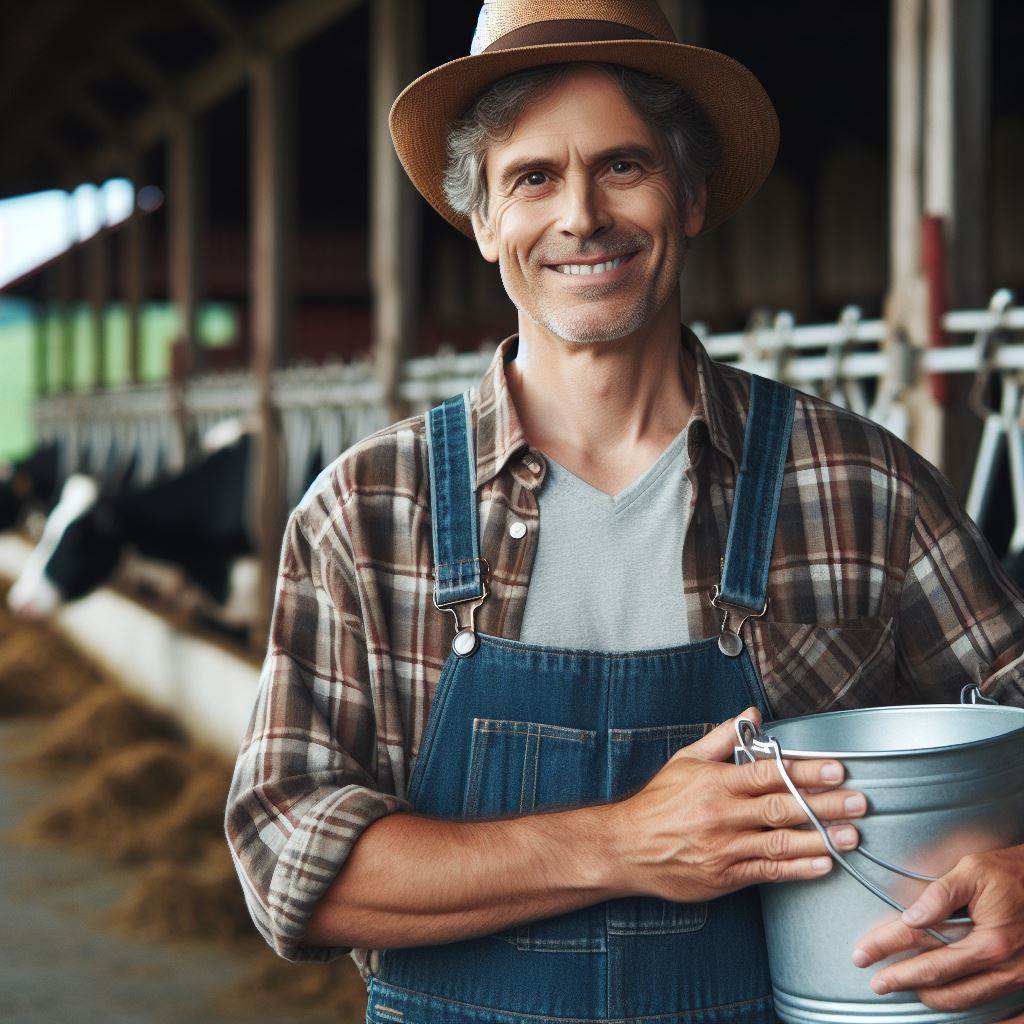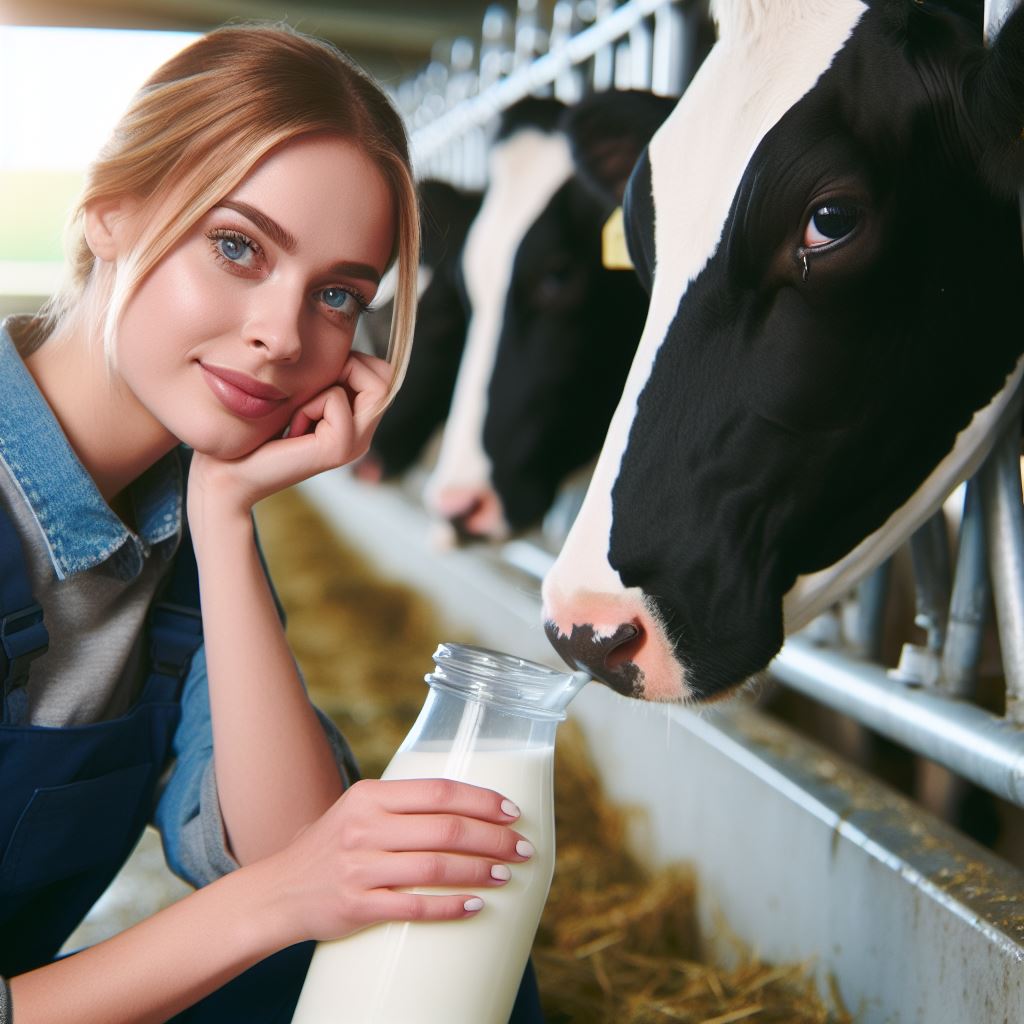Introduction
Advancements in genetics have revolutionized modern cattle management, allowing farmers to selectively breed for desired traits.
The use of technology, such as electronic identification systems and precision farming, has improved efficiency and productivity in cattle farming.
Proper nutrition is essential for cattle health, with a focus on balanced diets and feed efficiency.
Animal welfare has become a significant concern in modern cattle management, with an emphasis on providing comfortable housing and reducing stress.
Environmental sustainability is increasingly important, with practices such as waste management and sustainable grazing strategies being implemented.
In short, staying updated with the key trends in modern cattle management is crucial for farmers to thrive in a competitive market.
By adopting these advancements, farmers can enhance productivity, improve animal welfare, and ensure sustainable and environmentally friendly practices.
Trend 1: Technology Integration
Technology integration has revolutionized the field of cattle management, leading to significant improvements in efficiency, data collection, and decision-making.
Modern cattle farmers are increasingly incorporating various technological tools and devices into their operations to ensure better management practices and enhanced productivity.
Examples of technology used in modern cattle management
- RFID tags:A prominent example of technology used in modern cattle management is the utilization of RFID (Radio Frequency Identification) tags.
These tags can be attached to individual animals, allowing farmers to digitally identify and track them. - GPS tracking:GPS tracking systems are another valuable tool that enables farmers to monitor their cattle’s movements, ensuring their safety and preventing theft.
- Automated feeding systems:Additionally, automated feeding systems have gained popularity, enabling farmers to provide precise nutrition and reduce the labor-intensive task of manual feeding.
Benefits of technology integration
- Improved efficiency: The integration of technology brings several benefits to cattle management. Firstly, it significantly enhances efficiency. RFID tags and GPS tracking systems enable farmers to easily locate and manage their livestock, saving time and resources. Automated feeding systems ensure precise feeding, eliminating wastage and promoting healthy growth among the cattle.
- Data collection for better decision-making: Secondly, technology enables data collection, which is vital for better decision-making. By monitoring various parameters such as weight, food intake, and health data, farmers can make informed decisions to optimize their operations and improve overall outcomes.
Challenges and considerations when adopting technology in cattle management
- However, adopting technology in cattle management also presents certain challenges and considerations.
- One major concern is the initial investment required to implement advanced technological systems.
- Farmers need to dedicate financial resources to purchase and install RFID tags, GPS tracking systems, and automated feeding systems.
- Furthermore, there is a learning curve associated with using these technologies.
- Farmers must be trained and familiarized with their operation to fully utilize the benefits they offer.
- Additionally, there may be connectivity issues in remote areas, limiting the effectiveness of GPS tracking and data transmission.
In essence, technology integration plays a crucial role in modern cattle management.
The utilization of RFID tags, GPS tracking systems, and automated feeding systems offers numerous benefits such as improved efficiency and data collection.
However, farmers must carefully consider and address challenges such as initial investment and training to successfully adopt these technological advancements.
By embracing technology, cattle farmers can enhance their operations and achieve better outcomes in the ever-evolving field of cattle management.
Read: Essential Pig Nutrition for Growth
Trend 2: Sustainable Practices
Explanation of sustainable cattle management (e.g., rotational grazing, conservation of resources)
Sustainable cattle management refers to practices that aim to minimize environmental impact while maintaining healthy and productive cattle.
Transform Your Agribusiness
Unlock your farm's potential with expert advice tailored to your needs. Get actionable steps that drive real results.
Get StartedOne example is rotational grazing, where cattle are moved to different sections of pasture regularly to allow for rest and regeneration of the land.
This practice prevents overgrazing and improves soil health and biodiversity.
Conservation of resources is another important aspect of sustainable cattle management.
This includes careful water management, efficient use of feed resources, and minimizing waste.
By optimizing resource utilization, farmers can reduce their carbon footprint and improve overall sustainability.
Benefits of sustainable practices for cattle health and environmental impact
- Improved cattle health: Sustainable practices like rotational grazing allow for better forage quality and nutrient distribution, leading to healthier and more resilient cattle. Reduced stress levels and improved immune systems can also reduce the need for antibiotics and other medical interventions.
- Enhanced environmental impact: Sustainable cattle management practices minimize soil erosion, preserve water quality, and protect natural habitats. By adopting these practices, farmers play a crucial role in safeguarding ecosystems and mitigating climate change through carbon sequestration.
- Long-term economic benefits: Implementing sustainable practices can result in cost savings for farmers. Effective resource management reduces expenses related to water and energy, while improved cattle health and productivity lead to higher profit margins. Additionally, sustainable practices often align with consumer demand for ethically produced and environmentally friendly products.
Case studies or examples of successful implementation of sustainable practices
- Applewood Ranch: Located in Montana, Applewood Ranch has successfully implemented rotational grazing techniques. By carefully managing their pastures and stocking rates, the ranch has seen improvements in soil health, biodiversity, and overall cattle well-being.
- Green Acres Farm: Green Acres Farm in Iowa has adopted conservation practices such as buffer strips and cover cropping to reduce erosion and enhance water quality. These practices have resulted in improved environmental stewardship and helped maintain a healthy herd.
- Grasslands Farm: Grasslands Farm in Nebraska utilizes holistic planned grazing techniques to restore degraded grasslands. By mimicking natural processes and managing grazing intensity and duration, the farm has witnessed a significant increase in plant diversity and soil fertility.
These case studies demonstrate that sustainable cattle management practices are not only beneficial for the environment but also for the long-term viability and profitability of cattle operations.
By prioritizing sustainability, farmers can contribute to a more resilient and ecologically balanced agricultural system.
Read: Effective Pig Housing Solutions
Trend 3: Genetic Selection
Genetic selection plays a crucial role in modern cattle management, driving improvements in various traits and overall productivity.
It involves choosing animals with desirable genetic traits for breeding purposes, resulting in offspring with improved genetic potential.
Importance of genetic selection in modern cattle management
- The importance of genetic selection cannot be understated. In a highly competitive cattle industry, farmers strive to maximize their profits.
- By selecting cattle with desirable traits such as high growth rates, improved milk production, and meat quality, farmers can enhance their herds’ overall productivity.
Different methods and tools used for genetic selection (e.g., genomics, breeding values)
- Traditionally, genetic selection was based on visual inspection of animals and their performance records.
- However, advancements in technology have revolutionized the process.
- Genomics, for instance, allows the analysis of an animal’s DNA to identify specific genes associated with desired traits, enabling more accurate selection.
- Another essential tool for genetic selection is the use of breeding values.
- Breeding values estimate an animal’s genetic potential for specific traits, taking into account both its own performance and the performance of related individuals.
- This information helps farmers make informed decisions in selecting suitable breeding stock
Benefits of genetic selection (e.g., improved herd productivity, disease resistance)
- The benefits of genetic selection are numerous. Primarily, it leads to improved herd productivity.
- By carefully selecting animals with superior genetics, farmers can enhance important traits like growth, fertility, and milk production, resulting in increased profitability and efficiency.
- Furthermore, genetic selection can significantly improve disease resistance within a herd.
- By choosing animals with naturally higher resistance to common pathogens, farmers can reduce the need for medical interventions, improving animal health and reducing healthcare costs.
Ethical considerations and potential limitations of genetic selection
- While genetic selection offers numerous benefits, it is essential to consider ethical implications and potential limitations.
- Critics argue that intense selection for specific traits may compromise animal welfare or genetic diversity within the population.
- Additionally, over-reliance on genetic selection can increase the risk of inbreeding, leading to a reduced gene pool and increased susceptibility to diseases.
- Thus, careful management and balancing of genetic traits are necessary to mitigate these potential limitations.
In general, genetic selection is a crucial trend in modern cattle management.
By using advanced methods like genomics and breeding values, farmers can select animals with superior genetics, leading to improved productivity and disease resistance.
However, ethical considerations and potential limitations should always be taken into account to ensure sustainable and responsible genetic selection practices.
Read: Poultry Farming: Dealing with Predators

Trend 4: Animal Welfare
Growing concerns and public awareness regarding animal welfare in cattle management
Modern cattle management has witnessed a significant rise in concerns surrounding animal welfare.
With increased public awareness and growing empathy towards animals, people are demanding better treatment for cattle on farms and ranches.
The realization that animals deserve to be treated ethically has sparked discussions and actions regarding their welfare throughout the industry.
Regulations and standards regarding animal welfare in the industry
To address these concerns and ensure proper treatment of cattle, regulations and standards related to animal welfare have been implemented in the cattle management industry.
These regulations aim to set clear guidelines for farmers and ranchers, promoting responsible practices and minimizing any potential harm to the animals.
By enforcing these rules, the industry can work towards providing better living conditions for cattle and reducing any forms of mistreatment.
Practices and measures taken to ensure animal welfare (e.g., low-stress handling, proper housing)
In response to the growing concerns, the cattle management industry has adopted various practices and measures to prioritize animal welfare.
One such approach is the implementation of low-stress handling techniques.
These techniques focus on reducing potential stressors during transportation, handling, and other activities associated with cattle management.
Showcase Your Farming Business
Publish your professional farming services profile on our blog for a one-time fee of $200 and reach a dedicated audience of farmers and agribusiness owners.
Publish Your ProfileBy employing these practices, farmers can minimize the negative impact on the animals’ well-being.
Another vital aspect of ensuring animal welfare is providing proper housing for cattle.
Farmers are increasingly investing in creating comfortable and spacious living spaces for their animals, which includes clean and well-ventilated barns, access to clean water, and suitable resting areas.
These improvements contribute to a healthier and more contented herd, ultimately leading to increased productivity.
Benefits of prioritizing animal welfare for cattle health and productivity
- Putting animal welfare at the forefront of cattle management offers numerous benefits, both for the health of the animals and the productivity of the industry.
- When cattle are treated well and provided with suitable living conditions, they are less likely to experience stress and related health issues.
- Reduced stress levels contribute to stronger immune systems, decreasing the chances of diseases spreading among the herd.
- Additionally, low-stress handling techniques help minimize injuries during transportation and handling processes, ensuring the overall well-being of the animals.
- Furthermore, prioritizing animal welfare results in improved productivity within the cattle management industry.
- Healthier and happier animals tend to exhibit better growth rates, increased fertility, and higher quality meat and dairy products.
- Consumers are increasingly appreciating and supporting companies that prioritize animal welfare, leading to potential economic advantages for farmers who adopt these practices.
Basically, animal welfare has become a significant trend in modern cattle management, driven by growing public concerns and awareness.
Regulations and standards have been established to ensure ethical treatment of cattle, while practices such as low-stress handling and proper housing aim to improve animal well-being.
Prioritizing animal welfare not only benefits cattle health but also enhances productivity within the industry, making it a crucial aspect of responsible cattle management.
Read: Bee Genetics: Strengthening Your Hive
Trend 5: Data-driven Decision Making
Importance of data collection and analysis in modern cattle management
Data collection and analysis play a crucial role in modern cattle management.
By collecting and analyzing various types of data, cattle farmers can make informed decisions to improve their herds’ performance and overall profitability.
Types of data collected
In modern cattle management, several types of data are collected to gain insights into the herd’s performance and health.
These include performance records, health monitoring data, and environmental data.
Utilization of data in making informed management decisions
Farmers can utilize collected data to make informed decisions in various aspects of cattle management.
For example, performance records can help optimize feed rations and identify potential health issues at an early stage.
Health monitoring data can also assist in implementing effective breeding strategies.
Challenges and potential solutions for implementing data-driven decision making
- Implementing data-driven decision making in cattle management is not without its challenges.
- One major challenge is the integration and analysis of large volumes of data in a timely manner.
- Additionally, there may be a lack of expertise and technological infrastructure to support data analysis.
- To address these challenges, it is essential to invest in appropriate data collection systems and software that can efficiently handle and analyze large datasets.
- Training programs and workshops can also be organized to educate cattle farmers on data analysis techniques.
- Another potential solution is the utilization of automated data collection systems, such as sensors and wearable devices, which can provide real-time data without substantial manual efforts.
- These systems can streamline the data collection process and enable quicker decision making.
In closing, data-driven decision making is becoming increasingly important in modern cattle management.
By collecting and analyzing different types of data, farmers can optimize their operations, enhance their herd’s performance, and improve overall profitability.
Though there may be challenges, with the right tools and training, farmers can harness the power of data to make informed management decisions.
Conclusion
Modern cattle management hinges on five key trends.
These include advanced health monitoring, data-driven decision-making, optimized nutrition, smart infrastructure, and sustainable practices.
Staying informed and adaptable in this evolving industry is crucial.
Embrace these trends to elevate your cattle management practices, ensuring the health, productivity, and sustainability of your herd.
Explore and adopt these innovations to navigate the dynamic landscape of modern cattle farming successfully.
The integration of these trends not only enhances efficiency but also aligns your operations with the industry’s evolving standards.
As technology and best practices continue to shape the future of cattle management, those who remain proactive and embrace change are poised for sustained success in this ever-evolving sector.




